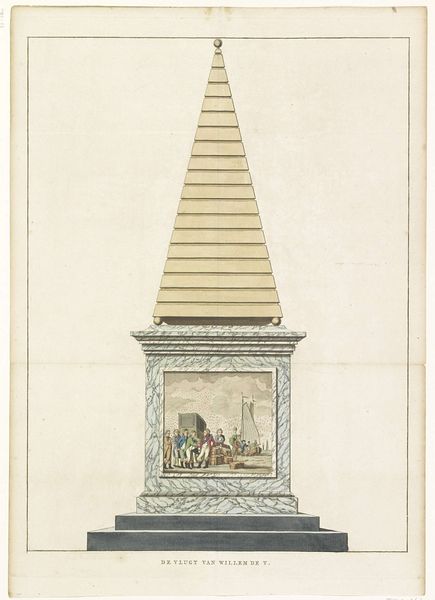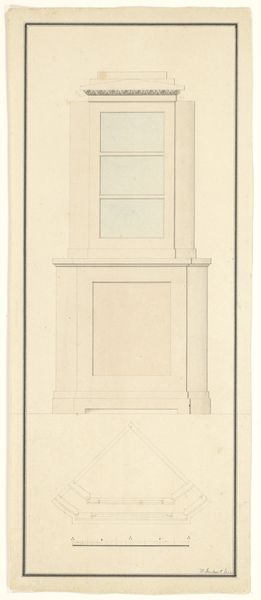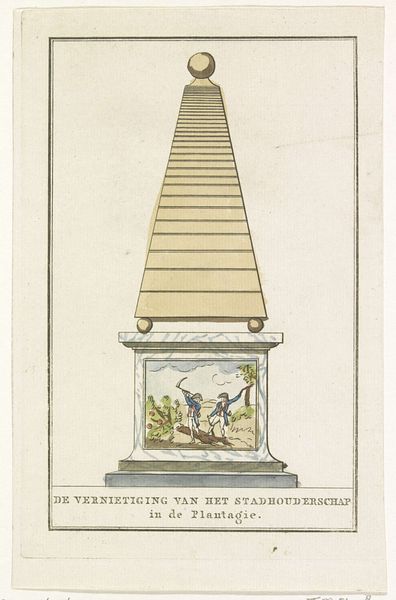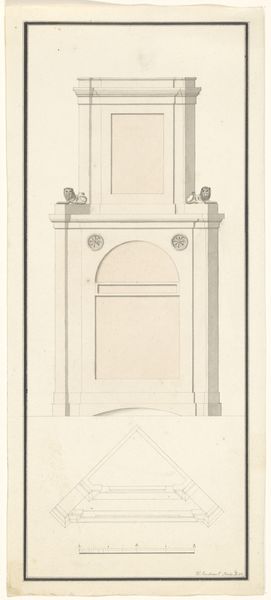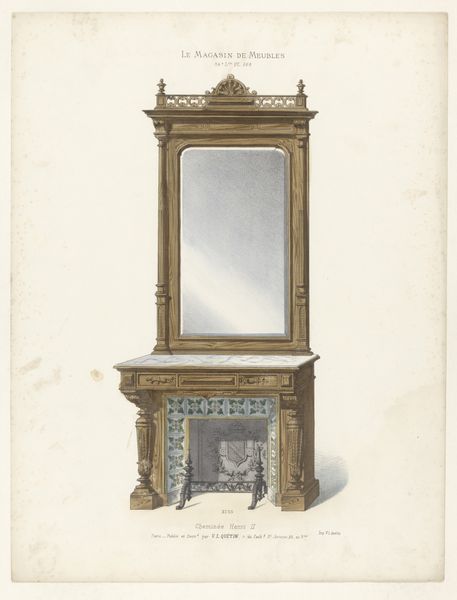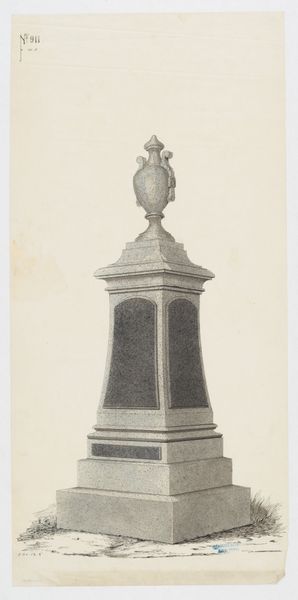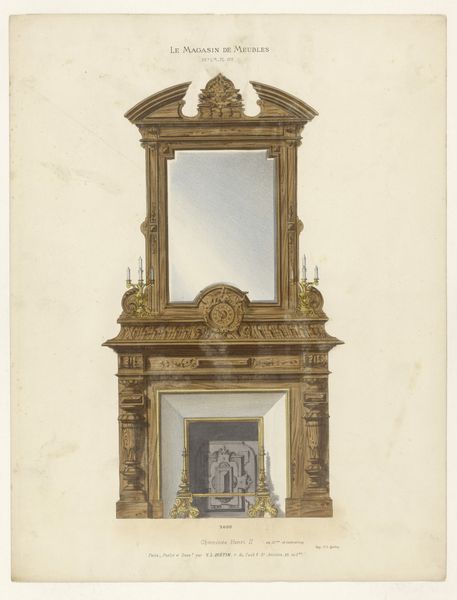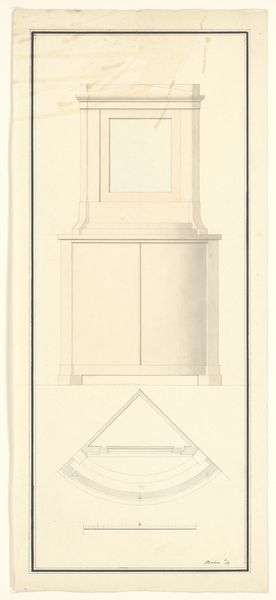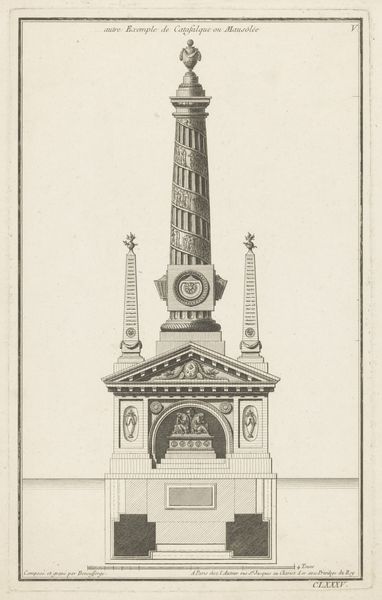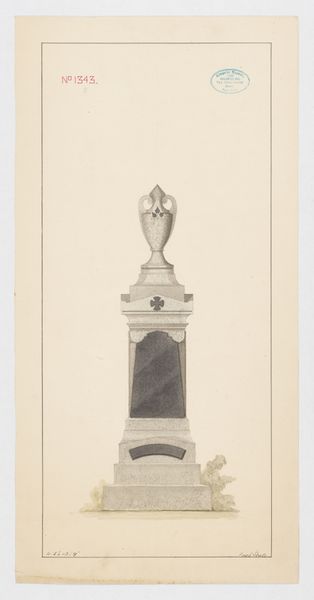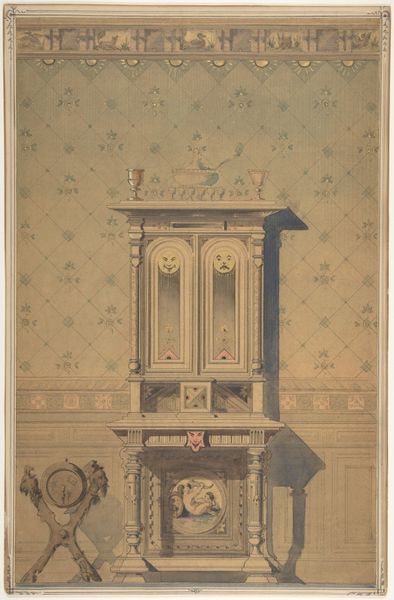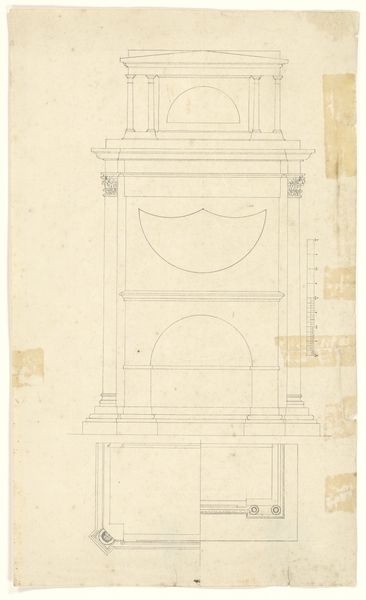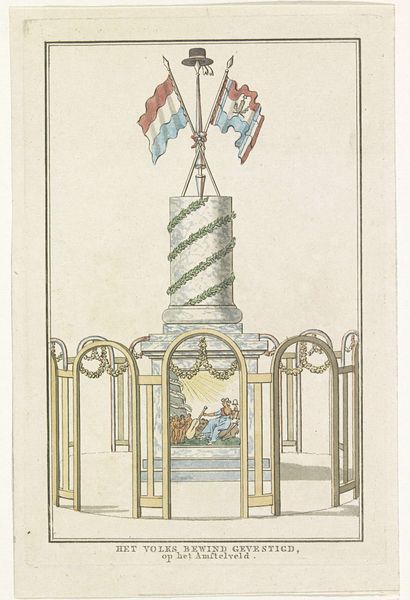
watercolor
#
neoclacissism
#
watercolor
#
historical photography
#
15_18th-century
#
watercolour illustration
#
history-painting
Dimensions: height 257 mm, width 185 mm
Copyright: Rijks Museum: Open Domain
Editor: This watercolor by A. Schol, titled "Vernietiging van het stadhouderschap, decoratie in de Plantage, 1795," depicts what seems to be a monument of some sort. It’s rather… celebratory? I’m intrigued by the pyramid-like structure atop the column. What do you see in this piece? Curator: Indeed, it is celebratory, commemorating the end of the Stadtholderate in the Netherlands. Note the prominent pyramidal structure; in iconography, the pyramid represents permanence and stability, harking back to ancient Egypt and the symbolism embedded within. Here, the illuminated nature references newfound liberty, but at what cost? Do you notice what’s happening on the column’s facade? Editor: Yes, it seems to show people actively destroying something. One figure has a scythe, the other some documents? Curator: Precisely! They’re quite literally mowing down symbols of the old regime and discarding its laws – revolutionary acts depicted with almost cartoonish simplicity. Ask yourself, what happens after such violent, iconoclastic upheaval? The artist invites reflection upon the very *act* of dismantling, questioning the ripple effects. The pyramid itself seems a bit unstable now, doesn’t it? Editor: I see your point! So the pyramid, while intended to project permanence, might be undermined by the imagery of destruction. A pretty nuanced take for what I initially perceived as a straightforward celebratory piece! Curator: It is precisely in these visual paradoxes that the real cultural memory resides, a push and pull between erasure and the desire for lasting legacy. These images are rarely straightforward celebrations, especially when they touch upon power. Editor: This really highlights how political shifts become embedded in artistic symbolism. I will certainly keep that in mind going forward. Thanks!
Comments
No comments
Be the first to comment and join the conversation on the ultimate creative platform.

